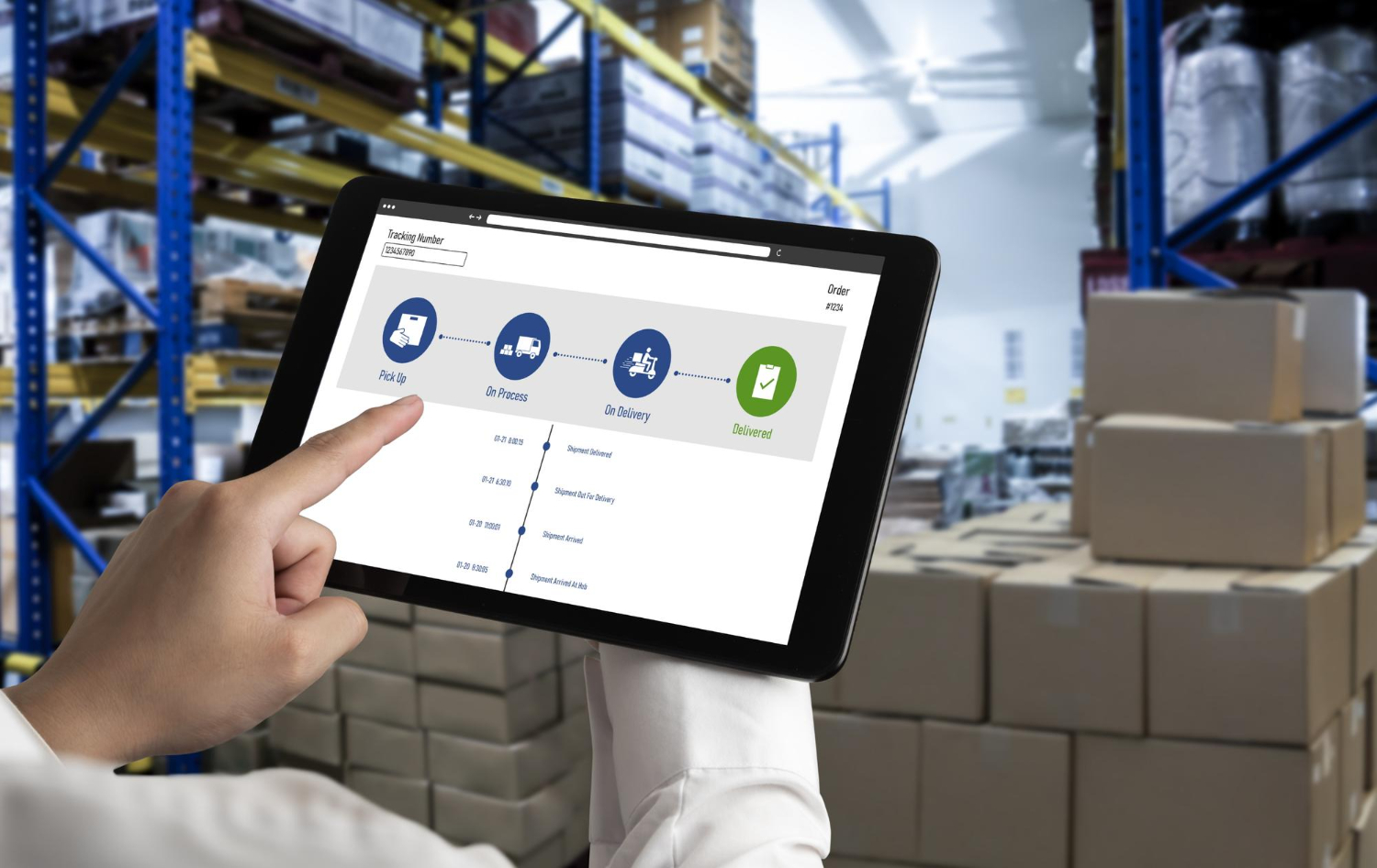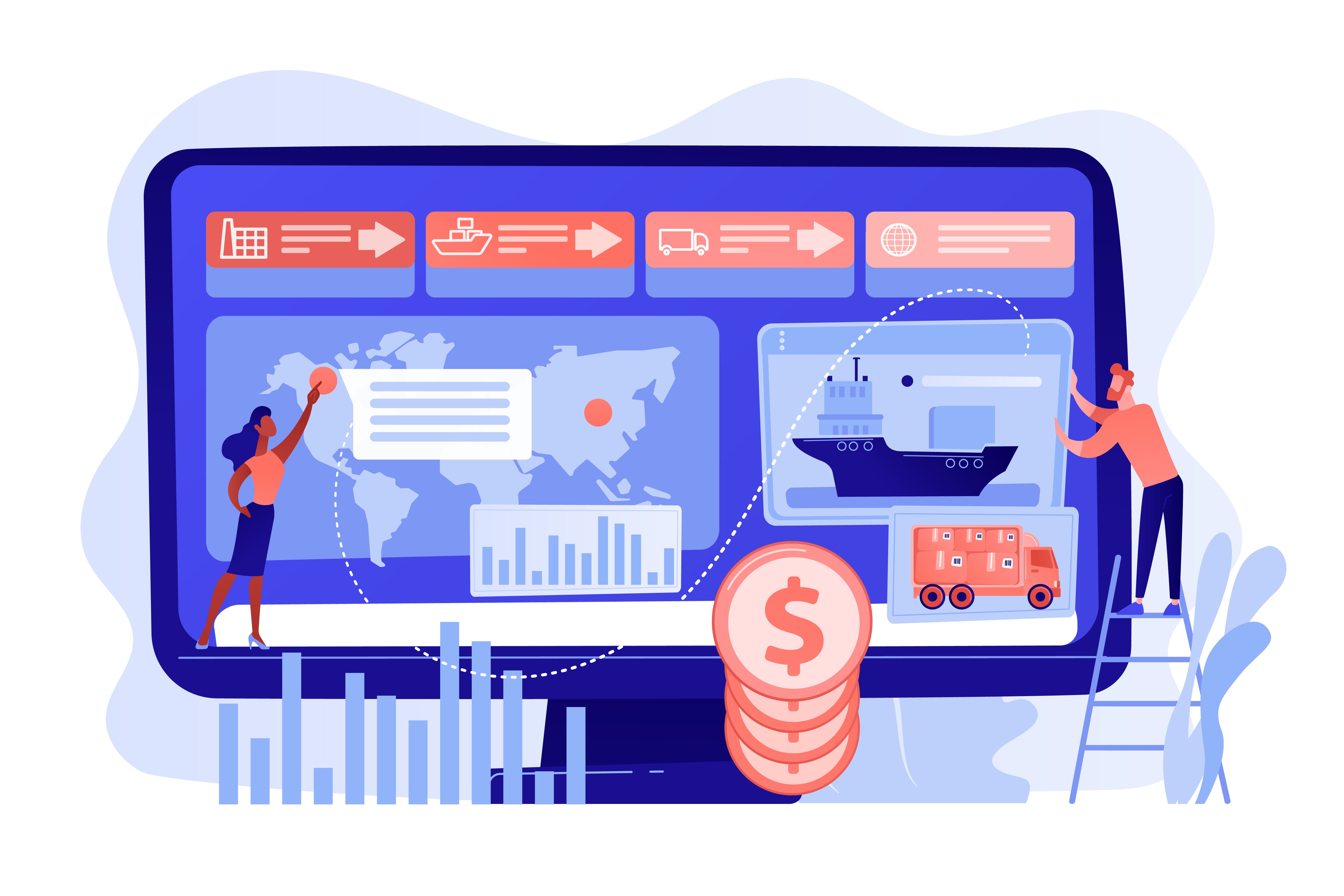Supply chain management software helps businesses plan, track, and control the flow of goods, from raw materials to finished products. It can manage inventory, orders, suppliers, warehouses, logistics, and forecasting. Most modern versions run in the cloud and also support mobile tools. They’re built with a supply chain management software architecture that ties together modules like procurement, planning, warehouse, and transportation.
Companies can pick from types of supply chain management software like planning-focused systems, warehouse management systems, transportation management software, and comprehensive suites. When it lives in the cloud, folks call it cloud SCM software. That means updates, scalability, and remote access without managing servers. This kind of system keeps operations smoother, cheaper, and more flexible.

Market Size & Stats
The global supply chain management software market is booming. Here are real numbers:
- In 2024, the SCM software segment brought in about USD 16.91 billion and is set to climb to USD 32.91 billion by 2030—an average growth of 12.1% per year.
- Another source values the broader market at USD 27.59 billion in 2024, rising to USD 72.72 billion by 2033, growing annually at 11.4%.
- One more report sees USD 30.41 billion in 2024, expecting it to hit USD 64.64 billion by 2031 at a 10.9% CAGR.
- Grand View Research says it was USD 23.26 billion in 2023 and will reach USD 48.60 billion by 2030 with an 11.2% CAGR.
Even with different ways of defining the market, they all agree it's growing around 11–12% annually. Other forecasts:
- Technavio says the SCM software market will add USD 24.9 billion between 2025 and 2029, about +14.6% CAGR.
- IMARC puts the 2024 market at USD 20.98 billion, expecting steady growth through 2033 at 10.6% per year.
In short, the global supply chain management software market is worth anywhere from USD 20 to USD 30 billion today and is likely to double in 5-7 years. That tells us companies are investing heavily in tools that give them clear insights, faster planning, better visibility, and control over their logistics.
Big reasons behind this surge? Cloud systems make adoption easier and cheaper. Firms also want real-time data and mobile access, especially now during mobile app development for field teams and logistics. More integration with AI and IoT is also pushing the upgrade cycle.
Investing in supply chain management software today is a smart move. The market’s growth shows it pays off. And adding mobile tools and cloud access makes systems flexible and usable anywhere.

How Much Does Supply Chain Management Software Cost?
When you start looking at the supply chain management software cost, you'll notice prices are all over the place. Some tools cost just a few hundred bucks a month. Others? They run into the tens or even hundreds of thousands a year. It’s not one-size-fits-all. So, why the huge range?
Size of Your Business
Big businesses need more. More users, more storage, more reports, more of everything. A small local business might spend $100 to $500 per month on a basic cloud system. But a company with 10 warehouses in 3 countries? They might pay $5,000 to $20,000 per month, or more.
If you have under 10 users, things stay cheaper. If you need it for 100+ people across departments, expect higher costs. Some vendors offer discounts for volume, but in general, the more people, the more money.
Features You Want
This is a big one. Some companies just want to track inventory and suppliers. Others want to plan delivery routes, forecast demand, handle returns, and run live reports. Basic systems might be $50/month per user. A tool with warehouse control, real-time tracking, demand prediction, and transport planning? That could be $2,000 to $10,000 per month, or more.
Extra features like barcode scanning or AI tools may cost extra, too. A planning module might add $3,000/year. A live dashboard system could tack on $5,000. You don’t have to get everything at once, but each new part adds to the supply chain management software cost.
Cloud vs. On-Premise
Cloud-based systems usually cost less to start. You pay a monthly or yearly fee. For example, $500–$5,000/month, depending on users and features. It includes updates, storage, and basic support.
On-premise means you install the software on your own servers. The price here jumps. Setup might cost $50,000 to $200,000 or more, plus hardware. You also pay for IT people to manage it. And updates may cost extra later. If you want something simple and easy to manage, the cloud is cheaper. If you want full control and your own setup, it’ll cost more upfront.
Custom Development
Not all businesses can use off-the-shelf software. Maybe you have unusual workflows. Or you want something that looks and works your way.
In that case, you’ll need web application development services to build it for you. This can cost from $30,000 to $150,000 to get started. Complex builds can hit $250,000+. That’s for design, development, testing, and launch.
Ongoing updates and support? That’s another $10,000–$50,000 per year. It’s a big investment, but for some companies, it’s worth it.
Number of Users
Most vendors charge per user. A small team of 5 people might cost $250/month total. But if you need 50 users, that could jump to $2,000/month or more. Some systems let you buy seats in bundles. Ten users for $900/month, for example. Others charge more for admins or power users. You should also ask: what happens if we grow? Adding users later might raise your monthly bill by a few hundred dollars each time.
Training and Support
Most tools need some training. Some vendors include it. Others charge by the hour or day. Online-only training is usually cheaper—maybe $100 to $500. In-person training? That can cost $1,000–$5,000, depending on how long it takes and how many people are trained.
Support plans matter too. Basic support (email only) may be free. 24/7 phone and live chat? That could cost $500–$2,000 per year or more. Some big companies pay even more for a dedicated support manager. Training and support aren’t optional. If your staff doesn’t know how to use the system, it’s wasted money.
Upgrades and Maintenance
Cloud software usually includes upgrades. But some features still come with extra costs. Want a new module added? That might cost $2,000–$10,000, depending on complexity. If you built your own tool with web application development services, you’ll need to maintain it. Bug fixes, security patches, and adding new features may cost $5,000–$20,000 per year or more. It’s like a car. You can’t just buy it—you also have to change the oil and fix things when they break.
Mobile Access and Integration
Many businesses want access on mobile. That means extra development. A mobile-friendly dashboard might add $3,000–$10,000 to your setup. A full mobile app built from scratch? That’s often $20,000+. Want your SCM system to connect with QuickBooks, your CRM, or ERP? Integration costs vary. A basic one-time setup might be $1,000. Big, ongoing integrations might cost $10,000–$50,000, depending on systems and setup.
But integration saves time and mistakes. So it’s often worth the money, even if the cost stings upfront.
So, what’s the real supply chain management software price? Here’s a rough idea:
- Basic software (1–10 users, cloud): $100–$500/month
- Mid-level tools (10–50 users, more features): $1,000–$5,000/month
- Large enterprise systems: $10,000–$50,000/month or more
- Custom-built systems: $50,000–$250,000+ up front, plus support
Add extra for training, mobile tools, and integrations. Don’t forget upgrades, maintenance, and growth over time. The supply chain management software price comes down to what you need now and where you’re headed. Start small if you can. But don’t go too cheap and end up with something that doesn’t work for you.

How Supply Chain Management Software Gets Made
Building software that helps manage your supply chain isn’t quick or cheap, but it can make your business run better, faster, and with fewer mistakes.
Step 1: Understanding the Business Needs
Before any code is written, there's a long talk. Maybe several. You (or your team) meet with developers to explain what you want. What does your supply chain look like? Do you have warehouses? Do you track shipping? Do you need forecasting or real-time alerts?
This is the planning phase. It’s where everyone tries to understand the job ahead. Developers ask about your goals, problems, and daily tasks. Then they turn that into a list of features the software needs.
Cost: Business analysis and discovery usually costs between $5,000 and $20,000, depending on how complex your supply chain is.
Step 2: Designing the System
Now it’s time to draw the screens, the buttons, and the flow. Designers create mockups and user journeys. You’ll see sample pages and give feedback. This step also involves sketching the backend—how things will connect, where data goes, and what systems talk to each other.
This is when supply chain management software solutions start to feel real, even if they’re just on paper (or a screen).
Cost: UI/UX design might cost $5,000 to $15,000. Technical architecture (what happens behind the scenes) can run another $10,000–$30,000.
Step 3: Development Begins
Once designs are approved, the real building starts. Developers write code to make everything work—order tracking, inventory, delivery logs, reports, supplier details, and so on.
This can take months, even half a year or longer, for complex systems. Often, the tool is built in chunks. Maybe warehouse management comes first. Then the inventory. Then shipping.
If you're starting from scratch or using custom supply chain management software solutions, this part takes time. If you’re just tweaking an existing system, it’s faster and cheaper.
Cost: A basic system might cost $30,000 to $60,000. A full enterprise-level system with mobile access, AI tools, and deep reporting? That could hit $150,000 to $300,000 or more.
Step 4: Testing the System
Now you have working software, but it’s not ready to go live. Testing comes next. Developers check for bugs, crashes, or anything broken. Your team might also try it and point out anything confusing or wrong.
There are several types of testing—automated and manual. Testers check if numbers match, if buttons work, if orders show up in the right place, and if the system handles mistakes (like missing inventory) the right way.
Cost: Testing can cost $5,000 to $25,000, depending on how large the system is and how many testers you need.
Step 5: Training and Setup
Software is only useful if people know how to use it. So the next step is training. Developers (or trainers) teach your team how the tool works. They might do this in person, online, or through videos.
At the same time, the software is installed or uploaded to your systems, whether on the cloud or your own servers. This is where everything gets “live.”
Cost: Training might cost $1,000 to $10,000. Setup and installation could run $2,000–$15,000 depending on your infrastructure.
Step 6: Launch and Support
Now you're live. Orders are tracked, warehouses update in real time, suppliers are added, and you can run reports with a few clicks. But the process doesn’t stop here.
You’ll need support. Bugs might appear. Features may need changes. You might want updates every few months. Some companies handle support with their internal teams. Others keep developers on call.
Cost: Support and updates often cost $500 to $5,000/month, or more for large systems.

How to Lower Supply Chain Management Software Costs
Supply chain management software doesn’t have to drain your budget. Here are some quick ways to keep the cost down:
- Start with core features only. Add extras later when needed.
- Choose cloud-based tools to avoid server and maintenance costs.
- Avoid custom builds unless your process truly needs them.
- Compare several vendors. Don’t settle for the first quote.
- Train your staff early. It prevents mistakes and reduces support calls.
- Pick software that can grow with your business.
So, What’s the Total?
Let’s say you're building mid-level supply chain management software solutions from scratch. Your total cost might look like this:
- Planning & business analysis: $10,000
- Design: $15,000
- Development: $70,000
- Testing: $10,000
- Setup & training: $7,000
- Support (1 year): $12,000
Estimated total: Around $120,000 to $150,000 for a mid-range system in 2025. Bigger systems can cost double or more. Smaller tools or partial modules might be under $50,000.
Developing supply chain management software solutions takes time, people, and money. But when done right, it can save your business thousands each month in errors, delays, and wasted effort.
